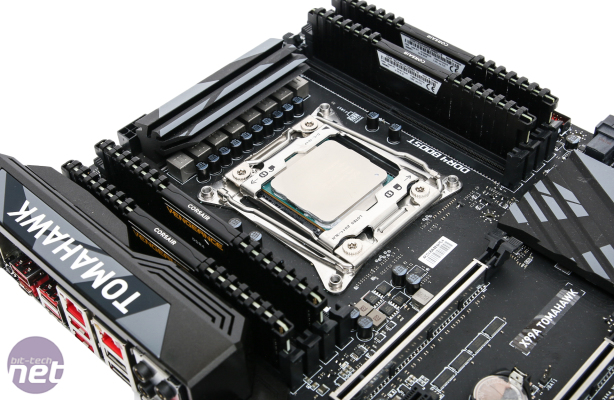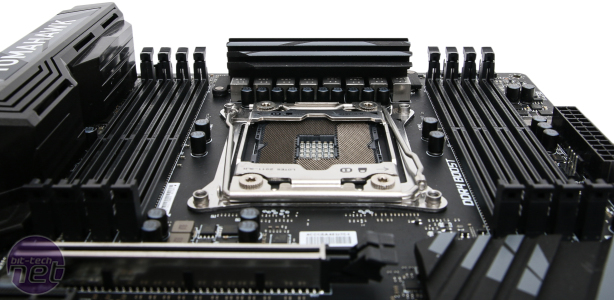
Overclocking
Anything above 4.4GHz is considered an extremely good overclock, but with our all-in-one liquid cooler this is usually the limit of either the cooler or the board. Such was so with the X99A Tomahawk, although it needed a little less voltage than the Gaming Pro Carbon to get there, requiring just 1.36V and a multiplier of x44 - a simple task.For those wanting to take a look at MSI's EFI and software, head over to our recent X99A Gaming Pro Carbon review, which has practically identical features in this department.
Click to enlarge
Performance Analysis
First and foremost - the throttling issue we found with the X99A Gaming Pro Carbon was well and truly solved by the X99A Tomahawk's double-spaced 16x PCI-E slots. It scored an extra 5,500 points in 3DMark Fire Strike once overclocked, had much healthier scores in Unigine Valley and a couple of extra frames per second in Ashes of the Singularity too.Elsewhere there's rarely much of a difference between results unless, like the throttling issue with the aforementioned board, there's something very wrong. The X99A Tomahawk wasn't the fastest board we've seen, but neither was it the slowest, with some respectable numbers across the board. There were no issues with storage either, and audio performance in RightMark's Audio Analyser was right on the money for a modern X99 motherboard and a match for the best we've seen short of Asus's Rampage V Edition 10 when equipped with its SupremeFX Hi-Fi DAC.
Click to enlarge
Conclusion
The MSI X99A Tomahawk is a surprisingly well rounded motherboard and ticks more boxes than it might first appear to. You get the full array of overclocking and testing tools including a CMOS clear switch and dual-BIOS, an RGB LED header, some snazzy aesthetic additions and a mostly great layout. We love MSI's EFI's too - we hope it continues to improve them to keep up with Asus in 2017 with two new enthusiast chipsets potentially on the cards and a lot of new boards too.In addition to the solid performance across the board, perhaps the best bit about the X99A Tomahawk is the price. At £230, it undercuts most of the competition, while offering more features than equivalently priced boards such as Asus's X99-E, while the likes of Gigabyte's X99-Ultra Gaming offer more visual pizazz for a little more cash, but again lack many of the MSI X99A Tomahawk's features. As a result, the value score here is very high so while it might not sport the RGB lighting or titanium coloured PCBs of other boards, if you just want to get onto the X99 bandwagon for as little as possible and want to put the savings towards a shiny new NVMe SSD or faster graphics card, the X99A Tomahawk is a great buy.


MSI MPG Velox 100R Chassis Review
October 14 2021 | 15:04










Want to comment? Please log in.